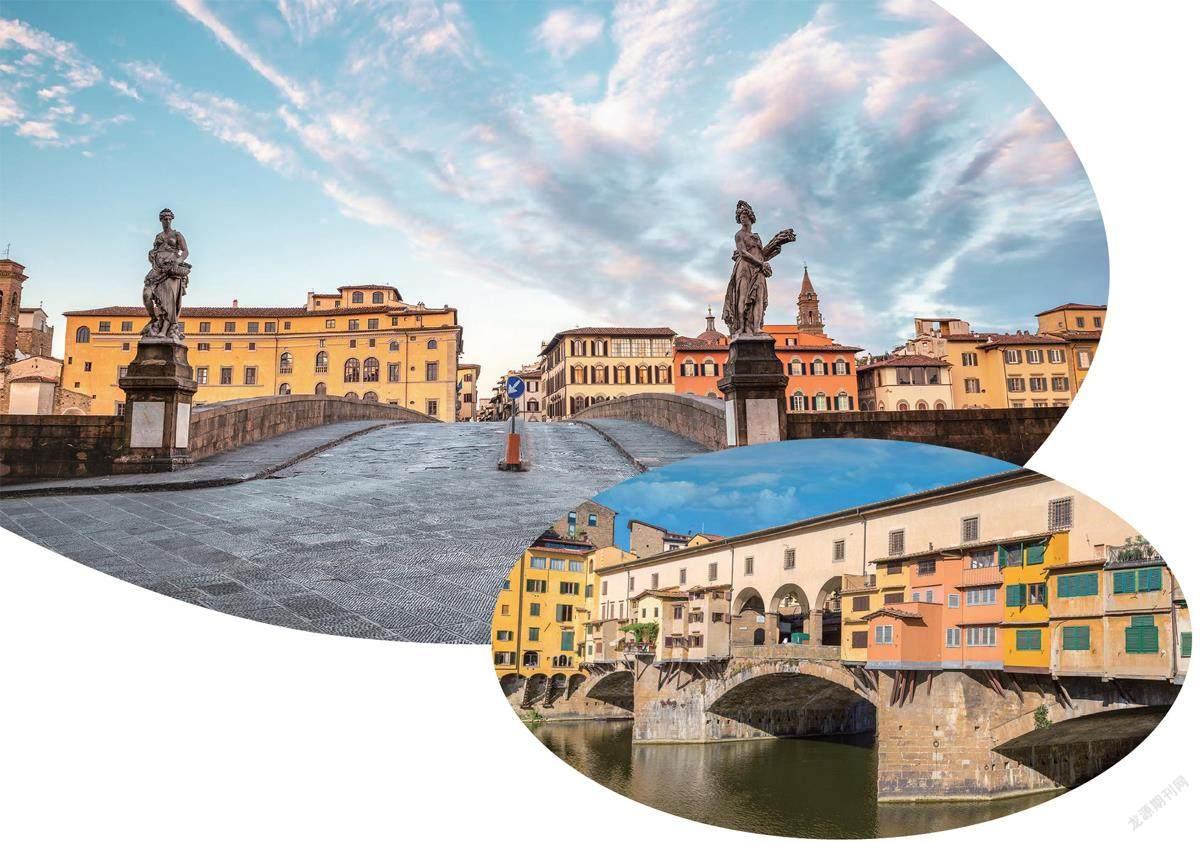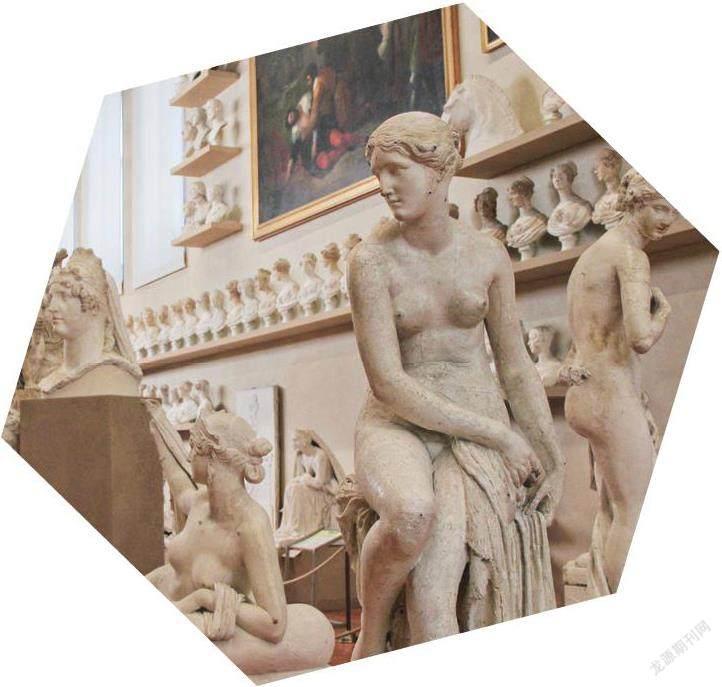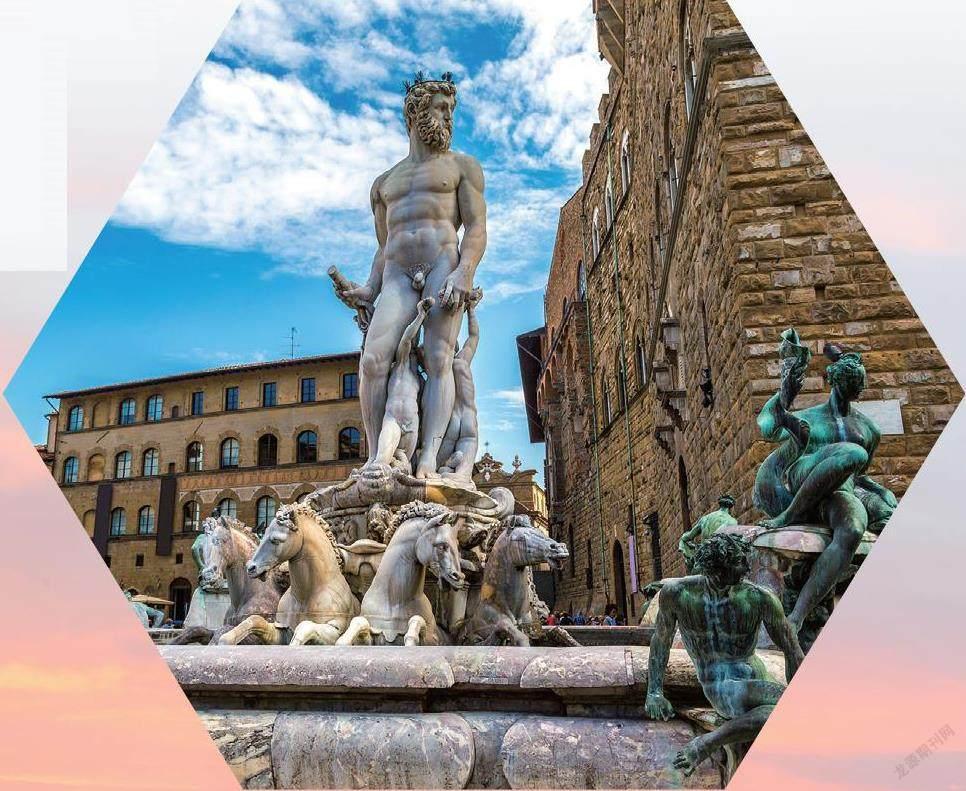Historic Centre of Florence佛罗伦萨历史中心
2023-03-16许林玉
许林玉









佛罗伦萨历史中心是城市规划和建筑艺术的杰作,既是中世纪和文艺复兴时期繁荣和商业重振的历史见证,又是充滿永恒之美的名胜区。
Florence was built on the site of an Etruscan settlement.This Tuscan city became a symbol of the Renaissance duringthe early Medici period (between the 15th and the 16thcenturies), reaching 1)extraordinary levels of economic andcultural development. The present historic centre covers 505ha and is 2)bounded by the remains of the city’s 14th-centurywalls. These walls are represented by surviving gates, towers,and the two Medici strongholds: that of Saint John the Baptist inthe north, popularly known as “da Basso”, and the Fort of SanGiorgio del Belvedere located among the hills of the south side.The Arno River runs east and west through the city and a seriesof bridges connects its two banks including Ponte Vecchio andPonte Santa Trinita.
Seven hundred years of cultural and artistic blooming aretangible today in the 14th-century Cathedral of Santa Maria del
Fiore, the Church of Santa Croce,the Palazzo Vecchio, the Uffizigallery, and the Palazzo Pitti. Thecity’s history is further evident in theartistic works of great masters suchas Giotto, Brunelleschi, Botticelliand Michelangelo.
The Historic Centre of Florence can be 3)perceived as aunique social and urban achievement, which includes museums,churches, buildings and artworks of immeasurable worth.Florence had an overwhelming influence on the development ofarchitecture and the fine arts, first in Italy, and then in Europe.It is within the context of Florence that the 4)concept of theRenaissance came to be. This heritage bestows upon Florenceunique historical and aesthetic qualities.
Overthecenturies ,Florence’s location also proved5)optimal for agriculture andtrade. The surrounding46Crazy landscape was well-suited toraising crops and livestock, andland-and water-based traderoutes—the Arno in particular—passed through or near the city.Today, multiple bridges connectthe northern and southernhalves of Florence across theArno. Spanning the river at itsnarrowest point is the PonteVecchio (“Old Bridge”). Earlierbridges built at or around thesame spot had washed away in floods, but this bridge haslasted since 1345.
Modern structures with big footprints 6)interrupt the sea ofred-tile roofs north of the river. Near the center of town, railroadtracks draw parallel lines running north-northwest. West of thetracks and immediately north of the river are racetracks. Nearthe east of the town sit sports stadiums. Although dwarfedby modern train tracks and racetracks, many of the smaller buildings near the center of town are far more famous. In aplaza north of the river, not far from the Ponte Vecchio, sit theFlorence Cathedral (Santa Maria del Fiore) and the Baptistery.The cathedral appears as a cross-shaped building casting a bigshadow to the north. Its neighbor to the west, the Baptistery, isbright white.
Santa Maria del Fiore towers above the city skyline.The building was started in the thirteenth century but theconstruction of its dome was not completed until the fifteenth,overseen by the architect Filippo Brunelleschi. With a meandiameter of 143.5 feet (43.7 meters) and a height of 295 feet(89.9 meters), the dome was the biggest built since Antiquity. Bysome estimates, the Duomo remains the largest masonry dometoday.
The Baptistery may be the oldest surviving building inFlorence. The 7)belief that the Baptistery originated as a Roman Temple of Mars persisted for centuries. Even though the time ofthe Baptistery’s construction remains a matter of research anddebate, excavations have 8)indicated that the building sits onfoundations dating from the first through third centuries AD.
1) extraordinary adj. 非同尋常的
2) bound v. 形成……的边界
3) perceive v. 感知;认为
4) concept n. 概念
5) optimal adj. 最优的;最佳的
6) interrupt v. 打断;遮挡
7) belief n. 信念;相信
8) indicate v. 表明;显示
词组加油站
a symbol of ……的象征
have a/an...influence on 对……有……影响
in particular 尤其;特别
date from 追溯到
佛罗伦萨是在意大利古国伊特鲁里亚的一个定居点上建立起来的。在美第奇时代早期(15世纪到16 世纪之间),这座托斯卡纳城市成为文艺复兴的象征,无论是经济还是文化,都发展到了非凡的水平。现在的历史中心以该市14 世纪城墙遗迹为界,占地505公顷。在这些城墙上,有残存的城门、塔楼和两座美第奇堡垒:北部的施洗者圣约翰堡(俗称“达巴索”),以及位于南侧山区的圣乔治德尔贝尔维德尔。阿尔诺河自东向西穿城而过,两岸由众多桥梁互相连通,包括维奇奥桥和圣特里尼塔桥。
如今,在建于14世纪的圣玛丽亚大教堂、圣十字教堂、维奇奥宫、奥菲齐画廊和皮蒂宫,均可领略700年来的繁荣文化和艺术。在乔托、布鲁内莱斯基、波提切利和米开朗琪罗等艺术大师的艺术作品中,这座城市的历史更是栩栩如生。
佛罗伦萨历史中心可被视为独特的社会和城市成就,其中包括博物馆、教堂、建筑和无价的艺术品。佛罗伦萨对建筑和艺术的发展影响巨大,先是在意大利,然后是在欧洲。正是因为佛罗伦萨,才诞生了文艺复兴的概念。这一遗产赋予了佛罗伦萨独特的历史和美学品质。
几个世纪以来,佛罗伦萨的地理位置同样被证明最适合农业生产和贸易往来。周围的地貌非常适合种植农作物和蓄养牲畜,而陆路和水路贸易路线——特别是阿尔诺河——或穿城而过,或傍城而生。如今,佛罗伦萨的北部和南部由横跨阿尔诺河的多座桥梁连通。维奇奥桥(“老桥”)横跨河流最窄处,自1345年以来一直屹立不倒,而在同一地点或附近建造的早期桥梁已悉数被洪水冲跨。
占地面积巨大的现代建筑将阿尔诺河北岸的红瓦屋顶海洋一一遮挡。在市中心附近,铁轨形成了一条向西北偏北延伸的平行线。铁轨的西侧和阿尔诺河的正北面是赛马场,城东近郊则散布着一些体育场馆。尽管与现代的铁轨和赛马场相比相形见绌,但市中心附近许多小型建筑的名头却要大得多。在阿尔诺河北岸离维奇奥桥不远的广场上,坐落着佛罗伦萨大教堂(花之圣母大教堂)和洗礼堂。大教堂看起来像是一幢十字形的建筑,向北面投下巨大的阴影。西面与其毗邻的洗礼堂,闪着亮白色的光。
花之圣母大教堂塔楼群在城市天际线之上。大教堂始建于13世纪,由建筑师菲利波·布鲁内莱斯基监工建造,但它的穹顶直到15世纪才完成。该穹顶的平均直径达143.5英尺(43.7米),高度为295英尺(89.9米),是有史以来建造的最大的穹顶。据估计,大教堂仍然是当今最大的砖石穹顶建筑。
洗礼堂可能是佛罗伦萨现存最古老的建筑。数百年来,人们一直认为洗礼堂起源于罗马马尔斯神庙。尽管洗礼堂的建造时间仍然有待考证并充满争议,但发掘出来古迹表明,该建筑的地基可以追溯至公元1 世纪到3 世纪。
